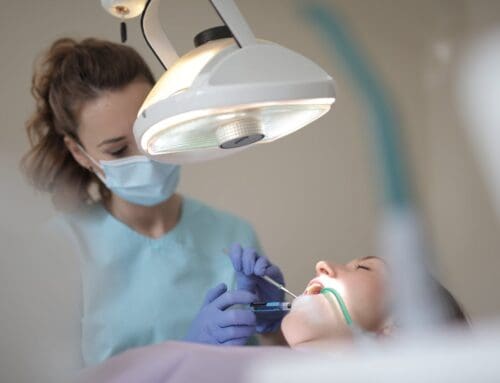 You may have been told that you have periodontal disease, but aren’t sure what that means. Our dentist in Rockville discusses below what periodontal disease is and how it’s treated. Periodontal disease, also known as gum disease, affects millions of people all over the world. It is the number one cause of adult tooth loss, and has been linked to a host of other ailments like diabetes, heart disease and problems in pregnancy. Nearly half of adults age 30 and older have some degree of gum disease, and the percentage increases with age. However, because the symptoms can be very subtle, many don’t realize they have gum disease until it starts to take a serious toll. Healthy gums are vital to a beautiful smile and to overall oral health — yet, when gums are not healthy, they not only look less appealing, but can also lose their tight attachment to the teeth.
You may have been told that you have periodontal disease, but aren’t sure what that means. Our dentist in Rockville discusses below what periodontal disease is and how it’s treated. Periodontal disease, also known as gum disease, affects millions of people all over the world. It is the number one cause of adult tooth loss, and has been linked to a host of other ailments like diabetes, heart disease and problems in pregnancy. Nearly half of adults age 30 and older have some degree of gum disease, and the percentage increases with age. However, because the symptoms can be very subtle, many don’t realize they have gum disease until it starts to take a serious toll. Healthy gums are vital to a beautiful smile and to overall oral health — yet, when gums are not healthy, they not only look less appealing, but can also lose their tight attachment to the teeth.
One of the chief signs of gum disease is the presence of periodontal pockets — that is, spaces around the teeth, below the gum line, that have become infected. Pockets provide an ideal environment for bacteria to grow, and may spread infection to the structures that keep teeth anchored in the mouth. Although periodontal pockets are invisible to the eye, they can be detected during an oral exam, when the space between the gums and teeth is measured.
During a comprehensive examination, your dentist or hygienist may probe your gums and read off numbers like “three-two-three…four-three-three…” These numbers indicate whether periodontal pockets are present, and how deep they are. Taken together, they can give your dentist an accurate picture of the health of your gums.
Getting rid of plaque bacteria (also called biofilm) and tartar is the first step in keeping gum disease from getting worse. In the case of inflamed gums with no bone loss, even a pocket depth of 4 mm or 5 mm may be treated with professional cleanings to remove the causes of the inflammation, along with an enhanced at-home oral care regimen. This will likely include, at minimum: brushing your teeth twice a day with a soft toothbrush and fluoride toothpaste; flossing daily to remove plaque between the teeth where your brush can’t reach; and using an oral rinse if recommended by your dentist.
If more severe periodontal disease is present, a procedure called scaling and root planing may be recommended. This thorough cleaning procedure not only removes the plaque and tartar, but also smooths the root surface so the gum tissue can reattach to the tooth, shrinking the pocket.
Sometimes, antibiotics may be used to reduce inflammation and help control bacteria underneath the gum line. Antibiotics can be given in pill form, but most often are directly applied inside the periodontal pocket.
If a pocket is too deep to be treated with non-surgical procedures, surgery may be recommended to reduce the size of the pocket. This procedure is often done by a periodontist — a dentist who specializes in the treatment of the gums and other supporting structures of the teeth — and may be performed with standard surgical tools or with laser instruments.
At home, good oral hygiene plays a huge role in preventing periodontal disease. Brushing twice a day and flossing daily will go a long way toward providing a healthy mouth. Some of our patients in our Rockville dental office find that a waterpik or water flosser is a great way to keep your pearly whites fresh and clean. If you have been told you have periodontal disease, give our dentist in Rockville a call for a free second opinion consultation.







